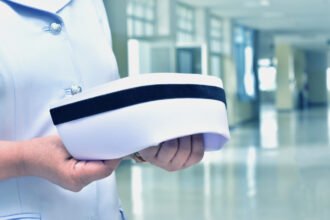Like most aspects of our society, the practice of medicine is changing at a rapid pace. Future physicians must be able to navigate new and increasingly complicated health information technologies, understand and use advances in personalized medicine and in some cases practice in coordinated settings such as accountable care organizations and medical homes.
Like most aspects of our society, the practice of medicine is changing at a rapid pace. Future physicians must be able to navigate new and increasingly complicated health information technologies, understand and use advances in personalized medicine and in some cases practice in coordinated settings such as accountable care organizations and medical homes.
To be successful, these future physicians – our nation’s current and upcoming medical students – must be prepared to thrive in a rapidly changing health care environment. Gaps now exist between how physicians are trained and the nature of the work they will do. To help narrow these gaps, some medical schools have begun innovative programs to advance medical education. Others have begun to think about ways to make changes to their programs, but are held back by constraints on time or resources.
As the nation’s largest organization representing physicians and medical students, the American Medical Association (AMA) is pleased to have played a leadership role in all levels of physician education. Now we want to take the next step in accelerating change in medical education.
The first step of the Accelerating Change in Medical Education program kicks off this week with the launch of a $10 million initiative to identify and develop innovative new education models that can be duplicated in medical schools throughout the country. Our aim with this new project is to facilitate meaningful change by over the next five years by providing funding for approximately 10 projects that support a significant redesign of undergraduate medical education.
The challenge has been extended to medical schools nationwide. We are seeking to attract and support bold, rigorously evaluated innovations that align medical student training with the evolving needs of patients, communities and the changing health care environment. We are looking for creative ideas – ways to develop new methods for teaching and assessing key competencies; foster flexible, individualized learning plans; promote methods to achieve patient safety, performance improvement and team based care; and improve students’ understanding of the health care system and financing.
To be considered, medical schools can now submit their ideas. We will review the proposals and announce those receiving grants at our Annual Meeting in June. The goal is to showcase successful innovations and promote their adoption in medical schools nationwide. We’ll be forming a learning consortium so participating schools can share best practices and structural innovations.
Students are invited to weigh in on this important discussion as well. If you have thoughts on how medical education can evolve, we want to hear about them. Let us know your thoughts in a comment on the AMA Medical Student Section Facebook page. Some ideas to think about: How can medical students prepare to meet the needs of diverse patient populations facing complex, costly problems in a continuously evolving health care system? Should medical schools move from a time-based (e.g., 4 year curriculum) to competency-based education where students demonstrate the achievement of milestones? If you want to highlight innovative activities, classes, educational tools, clerkships, structural changes, etc., going on at your medical school we’d love to know about those as well.
The future of medicine relies on inventive medical education that prepares today’s medical students to care for tomorrow’s patients. It is time to bring medical education up to date and provide students with the best possible training to succeed in our vital and rapidly changing field.
![]()






